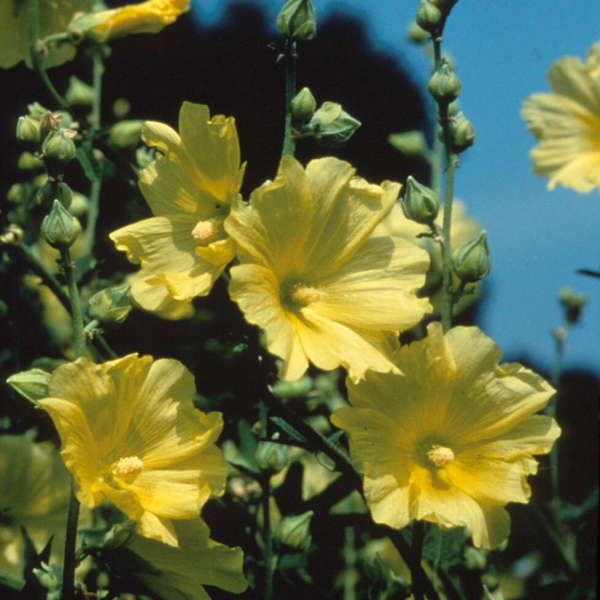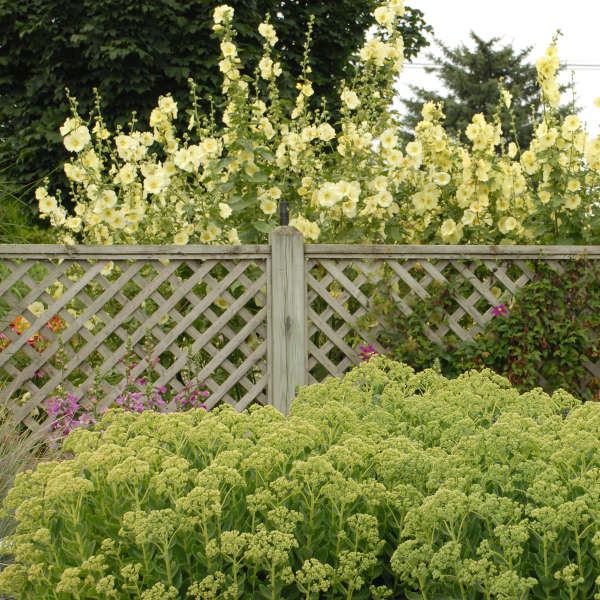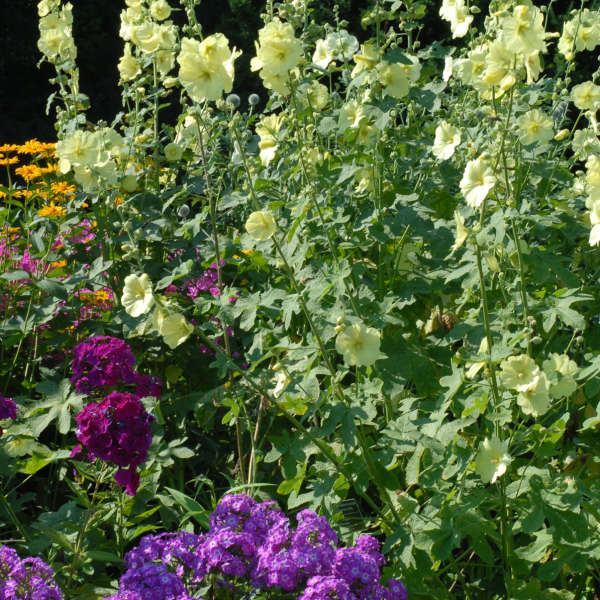Alcea rugosa
Common Name: Russian Hollyhock
An extremely hardy hollyhock native to Ukraine. This species has gained popularity lately due to its greater resistance to hollyhock rust.
In midsummer, large, single, soft yellow flowers appear on strong, hairy stalks. The leaves are deeply lobed in classic alcea form. This plant looks terrific when planted en masse.
Feel free to grow hollyhocks under Black Walnut trees; they are tolerant of the toxic juglone that is emitted through the trees' roots. Alcea rugosa should be treated as a biennial or short-lived perennial.


